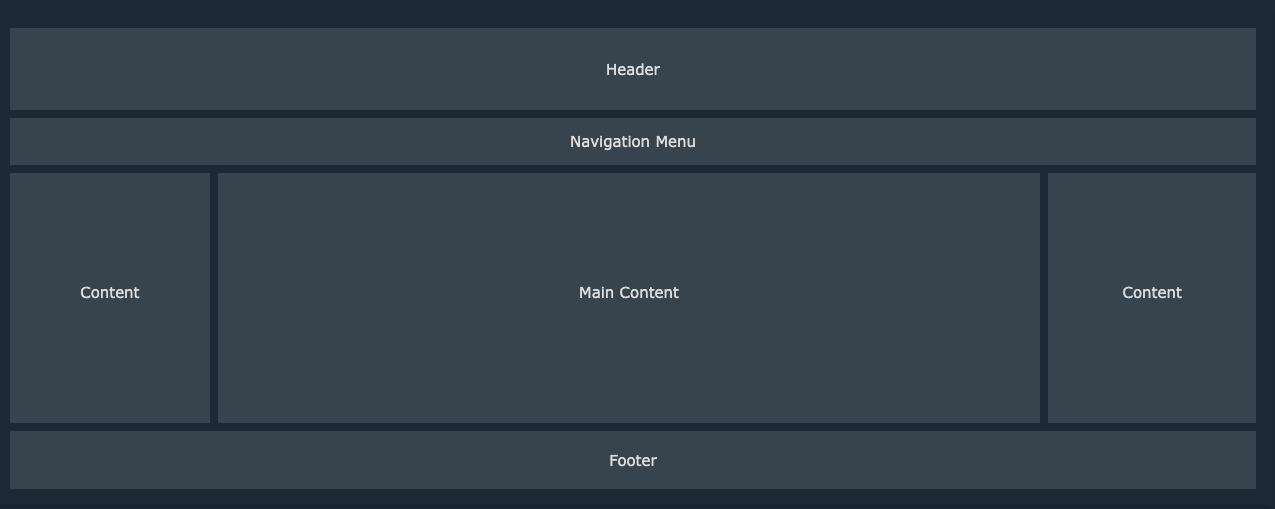bf-html-and-css
HTML
What is HTML?
- HTML stands for Hyper Text Markup Language.
- It is the standard markup language used for creating Web pages.
- HTML describes the structure of a Web page.
- It consists of a series of elements.
- HTML elements tell the browser how to display the content.
- These elements label pieces of content such as “this is a heading”, “this is a paragraph”, “this is a link”, etc.

HTML Structure
<!DOCTYPE html>
<html>
<head>
<!-- Metadata and links to external resources -->
<link rel="icon" href="http://example.com/favicon.png" />
<title>Page Title</title>
</head>
<body>
<header>
<h1>My First Heading</h1>
</header>
<main>
<p>My first paragraph.</p>
</main>
</body>
</html>
- The
<!DOCTYPE html>declaration defines the document type as HTML5. - The
<html>element is the root element of an HTML page. - The
<head>element contains metadata about the HTML document. - The
<title>element specifies the title for the HTML page (shown in the browser’s title bar or tab). - The
<body>element defines the document’s body, containing all the visible content such as headings, paragraphs, images, links, etc.
HTML Elements
An HTML element is defined by an opening <tag>, content, and a closing
</tag>. Some HTML elements, like <br>, are empty and do not have closing
tags.
Headings
Headings are defined with the <h1> to <h6> tags, <h1> being the highest
(or most important) level and <h6> the lowest.
<h1>This is heading 1</h1>
<h2>This is heading 2</h2>
<h3>This is heading 3</h3>
<h4>This is heading 4</h5>
<h5>This is heading 5</h5>
<h6>This is heading 6</h6>
Paragraphs
Paragraphs are defined with the <p> tag.
<p>This is a paragraph</p>
Links
Links are defined with the <a> tag, which stands for “anchor”. The href
attribute specifies the URL of the page the link goes to.
<a href="https://hackyourfuture.be/">This is a link</a>
Images
Images are defined with the <img> tag. The src attribute specifies the path
to the image, and the alt attribute provides alternative text for the image.
<img src="hyf.jpg" alt="HYF Logo" />
Attributes
Attributes provide additional information about HTML elements. They are always
included in the opening tag and usually come in name/value pairs like
name="value".
Formatting Elements
HTML provides several tags for text formatting:
<b>- Bold text<strong>- Important text<i>- Italic text<em>- Emphasized text<mark>- Marked text<small>- Smaller text<del>- Deleted text<ins>- Inserted text<sub>- Subscript text<sup>- Superscript text
Tables
Tables are used to display tabular data and are defined with the <table> tag.
Inside the table, the data is structured with <tr> (table rows), <th> (table
headers), and <td> (table data cells).
<table>
<tr>
<th>Company</th>
<th>Contact</th>
<th>Country</th>
</tr>
<tr>
<td>Alfreds Futterkiste</td>
<td>Maria Anders</td>
<td>Germany</td>
</tr>
<tr>
<td>Centro comercial Moctezuma</td>
<td>Francisco Chang</td>
<td>Mexico</td>
</tr>
</table>
Lists
HTML supports ordered (<ol>) and unordered (<ul>) lists.
Unordered List
<ul>
<li>Coffee</li>
<li>Tea</li>
<li>Milk</li>
</ul>
Ordered List
<ol>
<li>Coffee</li>
<li>Tea</li>
<li>Milk</li>
</ol>
Block and Inline Elements
Block-level Elements
A block-level element always starts on a new line and stretches out to the left
and right as far as it can. Examples include <div>, <h1>, <p>, and
<table>.
Inline Elements
An inline element does not start on a new line and only takes up as much width
as necessary. Examples include <span>, <a>, and <img>.
<p>Hello World</p>
<div>Hello World</div>
<span>Hello World</span>
Iframe
An iframe is used to embed another document within the current HTML document.
<iframe
src="demo_iframe.htm"
height="200"
width="300"
title="Iframe Example"
></iframe>
Responsive Web Design
Responsive web design allows a web page to adapt to different screen sizes and viewports.
<meta name="viewport" content="width=device-width, initial-scale=1.0" />
Semantic Elements
Semantic elements clearly describe their meaning in a human- and machine-readable way.
Examples of Non-semantic Elements
<div>and<span>do not convey any information about their content.
Examples of Semantic Elements
<form>,<table>, and<article>clearly define their content.
Absolute Path vs Relative Path
Absolute Path
<img src="https://www.w3schools.com/images/picture.jpg" alt="Mountain" />
Relative Path
<img src="../assets/html-css.png" alt="HTML and CSS" />
Entities
HTML entities are used to display reserved characters.
<!-- copyright -->
<div>©</div>
Symbols
HTML supports various symbols.
<!-- euro -->
<div>€</div>
Emojis
HTML supports emojis through entities.
<!-- smiley face -->
<div>😀</div>
Forms
Forms are used to collect user input. Various types of inputs are available, such as text, radio buttons, and checkboxes.
<form>
<label for="firstName">First name:</label><br />
<input type="text" id="firstName" name="firstName" /><br />
<label for="lastName">Last name:</label><br />
<input type="text" id="lastName" name="lastName" />
</form>
Various Input Types
<!--
<input type="button" />
<input type="checkbox" />
<input type="color" />
<input type="date" />
<input type="email" />
<input type="file" />
<input type="hidden" />
<input type="image" />
<input type="month" />
<input type="number" />
<input type="password" />
<input type="radio" />
<input type="range" />
<input type="reset" />
<input type="search" />
<input type="submit" />
<input type="tel" />
<input type="text" />
<input type="time" />
<input type="url" />
<input type="week" />
-->
Videos and Audio
HTML supports embedding media such as videos and audio.
Video Example
<video width="320" height="240" controls>
<source src="movie.mp4" type="video/mp4" />
</video>
Audio Example
<audio controls>
<source src="horse.mp3" type="audio/mpeg" />
</audio>